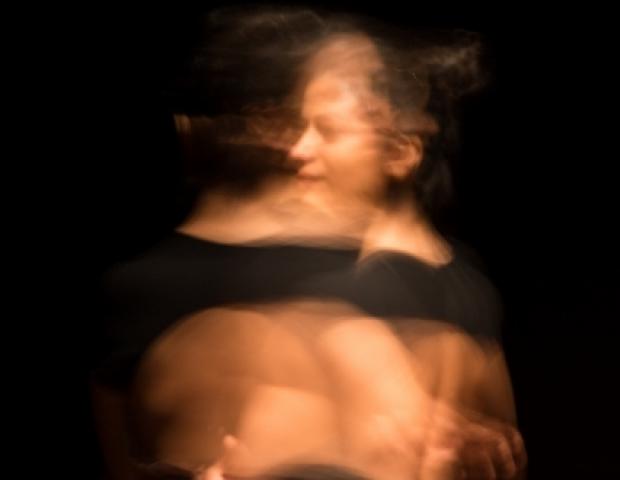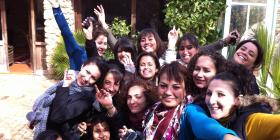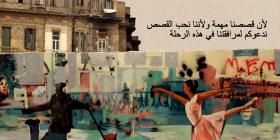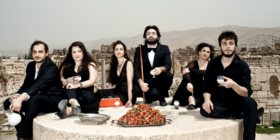Make way for Egypt’s Independent Contemporary Performing Arts

Source: IETM - International network for contemporary performing arts
The art practitioners, art aficionados, cultural journalists and – above all – the regular audience members of Egypt are really spoilt for choice when it comes to the contemporary arts scene, both in Cairo and Alexandria, and in several other cities. Even within the contemporary performing arts, there are countless events, formats, genres and colours,and a great deal of passion and dynamism on the part of practitioners.
The ardour is striking and reflects the great variety of art practitioners, cultural managers and venues. There are both professionals and amateurs, with some artists operating under the governmental institutions while others are embraced by the indepen dent organisations; there are troupes of all sizes, professional academies and centres providing education in performing arts, along with clubs and social circles.
Flashback: The importance of the history
This startling élan, however, did not arise from a vacuum; the current performing arts scene is the result of decades of evolution. Egypt’s unique performing arts history has been characterised by boundless enthusiasm, with the Egyptian identity often influenced and enriched by the international scene.
During the period of the imperial powers, with the British Occupation (1882–1952) and the opening of the Suez Canal (1869), Egypt’s performing arts underwent significant changes. For the first time, there were strong creative discussions between the two worlds, with many cultural bridges built, although at first the main beneficiaries seemed to be the Western cultural players. In 1869, the Khedivial (Royal) Opera House opened, the first such institution in Africa and the Arab region, until it burnt down in 1971.The opera embraced the Western art forms – symphonic music, ballet and opera, along with international theatre troupes – and provided a stage to the music stars of the Arab World.
In 1885, the National Theatre, known at the time as the Al-Azbakiya Theatre, hosted its first performances by an Egyptian theatre troupe. It also hosted the first Egyptian musicals and showcased the most notable singers of the Arab World, among them Um Kalthoum. By 1935, the National Egyptian Group had been formed under the leadership of poet Khalil Motran, although this was disbanded in 1942 because of its anti-British performances.
Slowly but surely, while the local traditional music and performing arts continued to play an important role within their enclosed communities, Egypt’s creative minds began to fuse the local traditional expressions with foreign avant-gardist experiences, often using them to showcase their new and highly distinctive identity.
Then came the July Revolution of 1952, led by the Free Officers, with King Farouk toppled and the British powers removed from Egypt. The Republic was declared and the country saw the establishment of its first Ministry of Culture, headed by Tharwat Okasha (1921–2012), an ample and knowledgeable figure. Among Okasha’s main aims was to provide the best arts education to the Egyptians, founding educational institutions and offering international scholarships. He launched the Academy of Arts, a complex embracing the already existing Higher Institute of Arabic Music (1929–) and the Higher Institute of Dramatic Arts (1944–). To these were added the Cairo Conservatoire, the Higher Institute of Cinema and the Higher Institute of Ballet, all three established in 1959 with mostly foreign teachers.
This Golden Age of the Egyptian arts bore many fruits for the country, attracting the attention of the Arab World and the international scene in general. But the reality was not always milk and honey. With the arrival of President Anwar Sadat (in office 1970–1981) and then President Hosni Mubarak (1981-2011), the government’s priorities, as expressed through the Ministry of Culture, no longer responded to the hopes and ambitions of the new and growing generation of arts practitioners.

The 1980's and 1990's: Challenging the status quo
Around this time, the big governmental bubble was broken by determined independent voices. At the heart of the burgeoning independent movement were the performing arts practitioners headed by the theatre circles; they probed for options that were free from government constraints, questioned and challenged the censorship laws, and looked for alternative spaces.
Those years witnessed birth of the El-Warsha troupe (1987), managed by Hassan El-Geretly, the Temple Independent Theatre Company, established by Ahmed El-Attar in 1993, along with other pioneering independent troupes, such as Abeer Ali's Al-Misaharati (Awakener), Mohamed Abdel-Khaliq's Atelier Al-Masrah (Theatre Atelier), and Mohamed Abul Soud's Al-Shazia (Shrapnel). At the outset, those companies focused on traditional means of expression and verbal theatre, and while some have continued in this vein, others have slowly incorporated contemporary vocabulary into their productions.
In September 1990, the Ministry of Culture cancelled the state-run Cairo International Experimental Theatre Festival (CIFET, 1988–2010, reborn in 2016 as the Cairo International Festival for Contemporary & Experimental Theatre, CIFCET) on account of the Iraqi invasion of Kuwait. In response, a group of theatre activists and critics held a meeting dubbed “The First Free Theatre Encounter”. The meeting resulted in the launch of the short-lived Free Theatre Festival (1991). The resulting commotion prompted Farouk Hosni, minister of culture (1988–2011), to offer Al-Hanager Centre – an edifice located within the grounds of the new Cairo Opera House(National Cultural Centre) – as a venue for independent voices.
In 1993, the Egyptian Modern Dance Theatre Company was established at the Cairo Opera House, with its first director Walid Aouni. It embraced several young dancers and physical performers: Mohamed Shafik, Nora Amin, Dalia El-Abd, Karim Tonsy and Nancy Al-Tonsy, among others. However, unable to express their own voices, many of those young dancers left the company and founded their own physical theatre and/or contemporary dance practices.
This divorce from the state-run dance company was among the hallmarks of the late 1990's, reflecting the significant shift in creative concepts on the part of young independent artists. With the arrival of the internet and increasing access to the international scene, young artists began exploring new ideas and contemporary modes of expression. Their passions and interests were in large part braided with the need to challenge the taboos, to ponder freedom of thought and expression, and to weave personal experiences and socio-political commentaries into their performances.
Neither the state-run Al-Hanager nor the Egyptian Modern Dance Theatre Company were able to meet the expectations of the budding youth. Nora Aminhad worked with both institutions and later found her independence, establishing Lamusica Independent Theatre Company in 2000. The troupe started as a laboratory for researching physical expression within performance, later becoming a company and staging over 30 performances to date.
Another former member of the Modern Dance Company is dancer and choreographer Mohamed Shafik, who was awarded at the state-run CIFET in 2000. Shafik’s Homma troupe blossomed in the early 2000s, launching a collaboration with the artist Laurance Rondoni in France in 2003.
We should also highlight such names as Dalia El-Abd, Karim Tonsy, Nancy Al-Tonsy, former members of the Modern Dance Company, who also embarked on their own independent practice.
Paralleling those practitioners, Karima Mansour’s Ma'at Dance M.E.C.A (Movement for Egyptian Contemporary Art), established in 1999, is among the pioneers of the independent contemporary dance movement. Mansour worked with and educated young dancers and choreographers, and in 2011 she opened the Cairo Contemporary Dance Studio, providing a curriculum of contemporary dance and physical expression.
The Ministry continued to invest in what they called “high culture” – establishing hundreds of Cultural Palaces and theatres, launching lavish international film, theatre or folkloric arts festivals, and keeping thousands of employees on the ministerial payrolls. However, many artists felt that the Ministry, in monopolising the opportunities and spaces, failed to serve their needs in terms of creative expression and to act on behalf of a large segment of the Egyptian society.
The 2000s: Opening a Pandora's box
For the governmental players, the growing independent movement – in theatre, dance, cinema and music – was like a Pandora’s box; once opened, it could not be closed. Against all odds, the performing arts scene in particular began to breathe.
In the 2000s, dozens of new troupes emerged, either fusing the traditional art forms with contemporary vocabulary or dedicating themselves fully to the latter format. They included Mohamed Abdel Fattah’s Hala (Mood) street-theatre troupe, Hani Abdel-Naser's Halwasa (Hallucination), Said Soliman's Ihtigag (Protest), and Mohamed Fawzi's Marionette.
From the governmental side, and on the initiative of Farouk Hosni, the Forsan El Sharq Heritage Company (The Knights of the Orient) dance troupe was established in 2009, under the joint supervision of two ministerial bodies, the Cultural Development Fund and the Cairo Opera House, with Esmat Yehia as its first artistic director. This was the state’s new attempt at creating a company that reflected the spirit captured by the world-renowned Caracalla Dance Theatre company, the over four-decades-old Lebanese troupe that fuses the Oriental traditional techniques in performing arts with Western modern and contemporary expressions. Though the Forsan El Sharq troupe is still present on the scene, due to various managerial and financial constraints, it did not take off as planned, being kept within more local parameters.
Again, the independent scene stepped in with its own projects. The early 2000's witnessed the emergence of various young choreographers, many of whom launched their own troupes: these include Reem Higab's MALH (Salt) and HaRaKa (Movement) for Dance and Development and Research, a collective established in 2003 by Adham Hafez. They explore physical dance and theatre, mime and movement, often creating an interesting fusion of art forms. Many of the independent players were embraced by the already established dance and theatre centres (including the Cairo Contemporary Dance Studio), where they could pass their practice on to younger generations.
In parallel, both the new and established cultural spaces run by the Egyptian cultural players and foreign cultural institutions began offering support to the contemporary performing arts practitioners. Here it is important to mention the Studio Emad Eddin Foundation, established by Ahmed El-Attar in 2005, Townhouse/Rawabet Space for Performing Arts, founded in 2006, in addition to foreign institutions such as the British Council Egypt, the Netherlands-Flemish Institute in Cairo, the Goethe Institut Kairo, Institute Francais Egypte, and the Cultural Office of the Public Affairs Section at the Embassy of the United States in Cairo, among others. Such players embraced the local scene, advocated their activities, opened doors to the various opportunities in Egypt and abroad, and brought various international artists to Egypt.
2011: New opportunities
With the political and social developments of the 2011 Revolution, Egypt’s cultural scene went through many changes, with new opportunities immediately grasped by independent performing arts practitioners. On the level of new troupes, young choreographers founded many companies in 2011, such as Mirette Mechail’s No Point Perspective dance/theatre group, Heba El Cheikh’s Mahatat for Contemporary Art, Ezzat Ezzat Dance Studio (EEDS), and the already mentioned Cairo Contemporary Dance Centre.
Artistic festivals were another gain, challenging the stagnant culture of the stage and old regime’s dependence on numbers: the big festivals, hundreds of invitees, dozens of performances, a profusion of funding – while the artistic values remained secondary. The rule of the Muslim Brotherhood (2012–2013) brought new financial constraints and ideological shifts, and the Ministry of Culture found it very difficult to keep its head above water. There was no better time for the independent cultural players to step in with their boundless creativity.
Once again, the financial – and moral – support provided by foreign institutions allowed new practitioners to emerge and new independent festivals to be launched. An Egypt Country Report on the European Union’s cultural relations states: “In Egypt and Middle East, the new form of performing art with an interdisciplinary dimension is not very developed. But a new generation of young artists wants to work in that way. They are the future of the performing art field where it's difficult to say if it's dance, theatre, performance, installation. They are also the future of the image of this region.”
Meanwhile, the pressure that the independent scene created on seven consecutive ministers of culture in two years, pushed the Ministry to offer some support, usually in the form of accommodation for the foreign guests and occasionally in providing venues.
The contemporary performing arts practices were fused into many initiatives. Speaking of the festivals, Egypt saw a spirit of reinvigoration of the already existing festivals (Cairo Contemporary Music Days, Bibliotheca Alexandrina Summer Festival, Cairo Jazz Festival, 2B Continued Lab and Festival, among others), while many new ones were launched (The Downtown Contemporary Arts Festival, the Backstreet Festival in Alexandria, the Hakawy International Arts Festival for Children, the Bibliotheca Alexandrina Contemporary Theatre Festival, etc.)

The Downtown Contemporary Arts Festival (D-CAF)
Finally, it is impossible to tackle the contemporary performing arts scene without giving space to The Downtown Contemporary Arts Festival (D-CAF). Launched in 2012, D-CAF makes use of various venues in downtown Cairo, as well as other locations in Cairo and other cities, presenting local audiences with the work of contemporary and/or experimental dance, theatre, music (in collaboration with Mahmoud Refaat from 100Copies Studio), literature, visual art, and street art. At the same time, D-CAF provides a meeting point between Egyptian artists and international practitioners.
The main dynamo behind D-CAF is Egyptian independent theatre director, playwright and cultural player Ahmed El-Attar, who has already been mentioned in connection with Temple Independent Theatre Company, 2B Continued Lab and Festival, and the Studio Emad Eddin Foundation, which he also manages. El-Attar is probably one of the few cultural managers able to blend their long presence in and understanding of the scene with the ability to bring to light a variety of artistic practices, all of which serve the contemporary arts scene. With D-CAF, El-Attar encapsulates the history of the Egyptian independent contemporary creative movement, propelling it towards many more encounters with the international scene.
With the support of many parties – most of the cultural centres, the European Union Delegation to Egypt, and the Ministry of Culture – D-CAF continues to grow. According to the report provided by D-CAF, in 2017 the festival included 91 performances, concerts and other events, 150 artists and speakers from 22 countries, catering to 6,800 attendees - figures in line with the 2016 edition. However, the quality of D-CAF is not limited to numbers. Each year, D-CAF brings a hand-picked selection of contemporary performances that carry unique artistic and/or human values; moreover, the festival provides opportunity for local artists to present themselves to the local scene while taking part in a multi-national performing arts showcase. D-CAF also creates a platform for exchanges to share thoughts and practices, and workshops which fuse educational elements with participants' hopes and expectations. At the time of writing this article, we are in the middle of D-CAF’s 7th edition (8-29 March), with a particularly interesting programme suggesting that the numbers will grow further.
A hopeful future
The Egyptian contemporary performing arts scene is alive and well. It is the story of the ongoing determination of practitioners to push the boundaries of self-expression and creativity. Cairo and Egypt’s other cities provide a captivating platform for expression and a fulfilling experience for all followers of performing arts – from all generations and social strata.
While Cairo is at the heart of all artistic practice, the independent cultural players do not neglect the other urban centres, with numerous events in Alexandria and other governorates. This happens on a larger scale, through cooperation among the many cultural players. Enumerating all such instances would require another long article, but a few examples can be mentioned here. For instance, Mahatat for Contemporary Art cooperated with the Cairo Contemporary Dance Studio in one of their Art in Transit series, taking contemporary dance to the streets of cities outside Cairo. Also, D-CAF occasionally moves its activities outside the capital. Very important are the discussions and interaction between different countries, including in the Arab region; the upcoming IETM Satellite, part of D-CAF's programme, is a good example.
The Ministry of Culture continues to make its own contribution to the scene, although its projects are often hampered by its complicated network of priorities – financial, managerial and socio-political.
As such, the hope for the future of Egypt’s contemporary performing arts development remains in the hands of the dynamic independent cultural managers and artists.
Photos courtesy of D-CAF Festival, Orient Productions.

About the author: Ati Metwaly
Ati Metwaly is a Polish/Egyptian cultural journalist based in Cairo, Editor of Arts and Culture section of Ahram Online, writing for many platforms in Egypt and internationally. Her focus is on music and performing arts as well as audience development and education through art. Prior to Ahram Online, Metwaly was the co-founder and Editorial Director (2004) of The Art Review, the first English language bi-monthly magazine about arts published in Egypt. She won the CNN MultiChoice African Journalist Award in Culture (2016) and was awarded the Cultural Leadership International grant from the British Council Egypt (2010).








